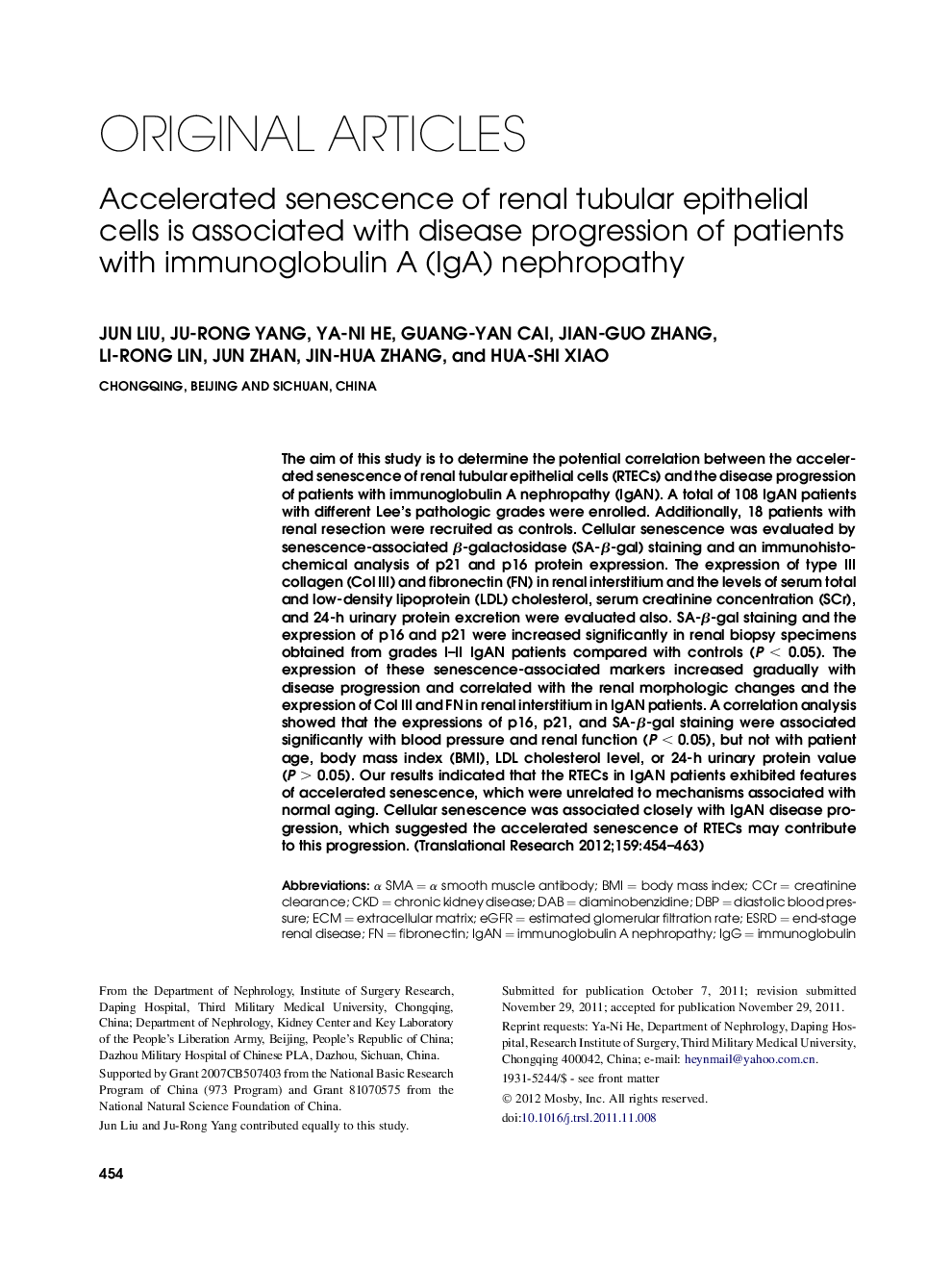| Article ID | Journal | Published Year | Pages | File Type |
|---|---|---|---|---|
| 3840721 | Translational Research | 2012 | 10 Pages |
The aim of this study is to determine the potential correlation between the accelerated senescence of renal tubular epithelial cells (RTECs) and the disease progression of patients with immunoglobulin A nephropathy (IgAN). A total of 108 IgAN patients with different Lee's pathologic grades were enrolled. Additionally, 18 patients with renal resection were recruited as controls. Cellular senescence was evaluated by senescence-associated β-galactosidase (SA-β-gal) staining and an immunohistochemical analysis of p21 and p16 protein expression. The expression of type III collagen (Col III) and fibronectin (FN) in renal interstitium and the levels of serum total and low-density lipoprotein (LDL) cholesterol, serum creatinine concentration (SCr), and 24-h urinary protein excretion were evaluated also. SA-β-gal staining and the expression of p16 and p21 were increased significantly in renal biopsy specimens obtained from grades I–II IgAN patients compared with controls (P < 0.05). The expression of these senescence-associated markers increased gradually with disease progression and correlated with the renal morphologic changes and the expression of Col III and FN in renal interstitium in IgAN patients. A correlation analysis showed that the expressions of p16, p21, and SA-β-gal staining were associated significantly with blood pressure and renal function (P < 0.05), but not with patient age, body mass index (BMI), LDL cholesterol level, or 24-h urinary protein value (P > 0.05). Our results indicated that the RTECs in IgAN patients exhibited features of accelerated senescence, which were unrelated to mechanisms associated with normal aging. Cellular senescence was associated closely with IgAN disease progression, which suggested the accelerated senescence of RTECs may contribute to this progression.
